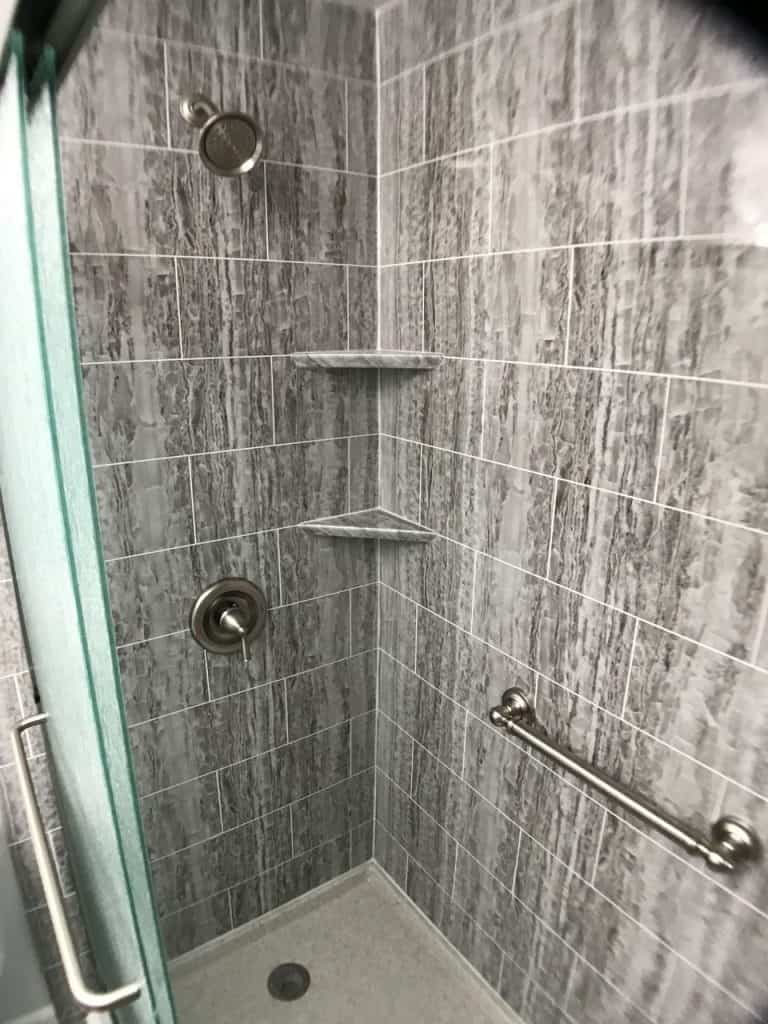5 Solutions to Acrylic Bathroom Problems
5 Solutions to Acrylic Bathroom Problems
Blog Article
{Start Now How do you feel in relation to Finding the Right Plumbing Expert? We recommend that you clean your acrylic bathing product made of Delta ProCrylic or Acrylic with Innovex Technology with non-abrasive soaps and cleaners, such as: When it’s time to clean, always use a terry cloth towel, soft cloth or sponge to avoid scratching the acrylic surface. Don’t use abrasive scrubbing pads, steel wool or sponges, cause permanent damage to the acrylic material. If you use a drain cleaner or clog remover, be sure to rinse thoroughly with water so no product is left standing near the drain. Some chemicals and cleaners may deteriorate acrylic surfaces, causing cracks and, potentially, property damage. To avoid this, don’t use cleaning products that state on their label that they are not suitable for use on Acrylic, ABS, Polystyrene or Plastic. Be sure to check the label of any product before you apply it to the surface; it’s easier to avoid damage than to try to remedy it. Chemicals we do not recommend using to clean acrylic showers/tubs: When you’re ready to apply sealant, a little planning goes a long way. Pick up some painter’s tape and use it to mask off the seam to help make cleaning up easier. When you’re applying the bead, use a constant, steady speed to avoid an uneven finish. Use a caulk tool or a plastic spoon to work the sealant into the joint. Wetting the tool with denatured alcohol will help create a smooth finish. Follow the directions on the back of the tube for cure time. Certain chemicals and cleaners may deteriorate acrylic surfaces, causing cracks and, potentially, property damage. After you’re finished applying it, clean up the product surface and remove any excess sealant with denatured alcohol. Don’t use solvents (turpentine, lacquer thinner, mineral spirits, paint thinner, MEK, xylene, acetone, naphtha, etc.) that can wreak havoc on an acrylic surface. With a little care and consideration, you can prevent damage to your acrylic shower or tub. Keep a supply of soft cloths handy and remove any damaging products or abrasive scrubbing items from the bathroom to ensure they aren’t around when it’s time to clean. https://www.deltafaucet.com/design-innovation/inspiredliving/how-to-clean-acrylic-shower I found that blog posting on Hiring a Plumbing Company while doing a lookup on the internet. Sharing is good. Helping people is fun. Thanks so much for going through it.
Polymer baths, shower trays, as well as other acrylic restroom ware have ended up being more common in bathrooms in recent times. Not as elegant and also resilient as enamel and porcelain bathrooms and fixtures, they are much more affordable as well as offer quite much the same basic function. Some usual instances of damage to acrylic bathroom fixtures include staining, splits, holes, etc.Scraped shower or bathroom surface area
Polymer shower room fixtures are not abrasion-resistant like enamel ranges. They are much more prone to scratches and much less durable. Being a really soft material, acrylic scrapes can even be concealed without finishing or dental filling. For these, you must look for specialist aid for your bathroom repairs. As a prevention idea, stay clear of utilizing rough sponges when cleansing. Rather, you must make use of an easy liquid cleanser with a soft pad.Chemical Reactions
Sometimes, individuals attempt to repaint the entire surface area of their acrylic bath on their own either since they do not like the color to conceal acnes. When they do not such as the end result, they apply paint eliminators. You must never ever make use of paint cleaner on acrylic baths. Paint cleaners do not respond with the surface of metal bathrooms, they destroy acrylic bathrooms irreversibly. This creates even more benefit the professional. The best strategy below is to call a professional for help with changing the bathroom.Bath Discoloration
With extended use of acrylic bathrooms comes discoloration or staining. While some spots can be removed easily, making use of special chemicals, others require that the bath be resprayed. Aromatherapy oils loosen up the dirt in some instances thereby restoring the bathroom to its former splendor.Fractured Acrylic Baths
The life-span of acrylic and also fiberglass baths is up to 15-20 years for shower pans and baths, normally. Cracks in an acrylic shower tray are possibly among the easiest issues to fix for a repair service professional. This is the same for PVC, material, and also other such products.
Acrylic bathrooms, shower trays, as well as other acrylic washroom ware have become a lot more common in washrooms in recent times. You must never use paint eliminator on acrylic bathrooms. Paint eliminators do not respond with the surface area of metal baths, they ruin acrylic baths irreversibly. With prolonged usage of acrylic bathrooms comes staining or discoloration. The life-span of acrylic as well as fiberglass baths is up to 15-20 years for shower pans and baths, normally.How to clean Acrylic shower
USE THESE NON-ABRASIVE CLEANERS
DO NOT USE THESE CLEANERS
Sealant Application Tips

Here